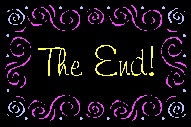Onward & Forward into 2016—‘Laughing Still Allowed’
by Larry Peterson
I had written sporadically over the years but I really started my ”prolific,” overzealous writing career in earnest about seven or eight years ago. I had taken C.S. Lewis’ advice and grabbed onto his quote, “You are never too OLD to set a new GOAL or to dream a new DREAM.” So I pulled out the old work I had squirreled away and before I could sharpen a pencil my expanding internal dictionary of adjectives was stopped in its tracks. I had to be operated on for prostate cancer.
The recovery process was a bit tough (part of that included having 30 staples plucked out of my forbidden zone, which was not pleasant, nor was catheter removal) but, no problem—the cancer was gone and still is seven years later. God obviously was not ready for me. So, I headed back to the keyboard and mouse. I thanked Him then and I have thanked Him every day since.
Then Martha was diagnosed with Lymphoma. Onward into the world of chemotherapy cycles which included her losing her hair, not once but twice. The second time she asked me to just shave her head and get it over with. I did and we laughed as she turned into cue ball redux. Then her memory began to produce strange and forgetful behavior. I thought it was “chemo-brain” but it wasn’t. During that time I managed to have a children’s book published, followed by my novel. (That publisher went out of business—another story for another time).
Ratcheting up my caregiver duties, I still completed another novel called “Destination Homeless.” That was about two years ago and all I have “left to do” is a final edit. I also have my latest novel almost done; it has a publisher and is already out on Amazon in volume form. Plus, over the years, I have written over 600 blogs. I had written more than I thought, which surprised me because it seemed like I was never getting anything done.
Anyway, a year ago I wrote an article for the CWG blog titled, “Celebrating Our First Christmas with Alzheimer’s Disease: Laughter Allowed.” Martha’s cognitive problems had started about a year and a half prior to that time so, as we march onward into 2016, we are about two and a half years down the Alzheimer road. Things are not the same as they were even a year ago. (Alzheimer’s Disease is one illness that cannot be cured, stopped, or even slowed).
Last year’s blog had in its title the words, “Laughter Allowed.” Well, for the past three (maybe four or five) months my writing has seemingly run into a major obstacle. There was a large brick wall in front of me and I was unable to type past it. The blogs became fewer and the novel was stuck in neutral. I was actually getting a bit freaked out about it and beginning to worry that I was turning into sludge. I was probably being a bit hard on myself because when you take care of an Alzheimer’s patient and do the shopping, the cooking, the daily distribution of various meds 4X a day, deal with all the doctors (scheduling, visits, weekly blood draws, port flushes etc.), do the bill paying, home maintenance, etc., and then try to find “quiet” time to fit writing into the equation, that is when you can suddenly go blank. I did. Then came Thanksgiving.
The family all got together at Larry Jr’s. My three kids were there and my seven grandkids and we all had a grand time eating all the traditional Thanksgiving foods, watching football and hanging out together. On the way home Marty said to me, “What are we having for dinner?”
Actually, for a moment, I thought she was making a joke. But she wasn’t you see. She did not remember. I said, “Are you kidding me? We just had turkey and all the fixings for Thanksgiving. Don’t you remember? We just left Larry’s house five minutes ago.” Then the reality of the moment hit… Damn, I do hate Alzheimer’s Disease. Anyway, she looked at me and I at her and we both began to laugh. As ridiculous as it sounds it was a great moment for both of us. Then I remembered—“Laughter allowed.”
Christmas is now over and I am writing this and I am extra thankful for Thanksgiving 2015. That day helped me snap back to the words in the title of last year’s blog. Laughing freed me up and I have actually spent some time on the final chapter of the Demons of Abadon. As for my dear wife, Martha, she is somewhat content in her own convoluted world. She does not remember Christmas Day. However, strange as it may seem, everything is okay. That is because on Thanksgiving Night, 2015, our unexpected and improbable friend, Laughter, returned. (I like to think it was a Christmas angel sent from above to help us out).
Once again I have relearned something I already knew and let slip by—no matter what is happening, when you have faith—laughing is allowed. It is God’s pressure relief valve and He installed one of these valves in each of us. More people need to let it go off once in a while. That’s it for 2015. Happy New Year, happy writing and God’s blessings to you all.
©Larry Peterson 2016

![MC900434910[1]](http://blog.catholicwritersguild.com/wp-content/uploads/2014/10/MC9004349101.png)








